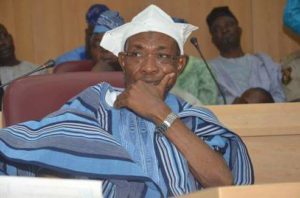News
Osun Debt Profile Worrisome, State in Insolvency – BudgiT
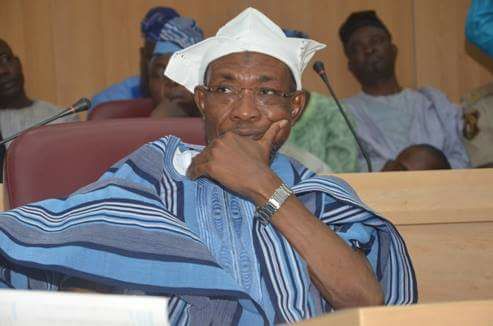
By Segun Adejumo
Osun state has again come into the top of the news in Nigeria because of her debt profile, which has been generating controversies in the state.
A transparency and accountability organization, BudgiT has described the debt profile the state as worrisome and that the state has sharply turned into insolvency.
Budgit, in its latest report titled ‘State of States’ chided the state government for obtaining loans for projects that did to add to or improve the Internally Generated Revenue (IGR) of the state for the smooth refund of the loans.
The reports reads:
“Osun State’s sharp turn to insolvency has been preceded by a faulty economic plan, with the State’s unfortunate predicament now being used as a lesson in fiscal strategy.
“The State received N123.59bn in bailout funds – the biggest in contemporary Nigerian history. Osun’s spending plan over the years came with the borrowing of N18.38bn to build six mini-stadia to amuse, and at best make its youthful population active. Also borrowed was N30bn at a lending rate of 14.75%, for roads and waterworks infrastructure which generate no income and therefore cannot provide for long-term sustainability repayment plans. Another N11.4bn was borrowed at a 14.75% lending rate to build schools, which would also unfortunately bring in no income into the State’s coffers. Even more debilitating to Osun’s economic prospects was that the repayments for all these debts ran concurrently, and deductions were made out of whatever revenue was to accrue to Osun State.
“Taking these loans which did nothing to improve Internally Generated Revenue amid large Overhead costs means the bulk of the State’s existing revenue is instead diverted into debt repayment.
“Total personnel costs which hitherto stood at N16.8bn in 2011 when government revenue was N54.8bn, have increased astronomically to N32.4bn, N42bn and N48bn in 2012, 2013 and 2014 respectively. Osun’s revenue, padded with savings from the fiscal buffer that is the Excess Crude Account (ECA) rose to N55.96bn in 2012, hitting a high of N61.89bn, before falling back to N57.1bn in 2014. However, N4.84bn, N2.87 bn, N8.54bn and N12.65bn was deducted at source to cover the State’s liabilities in the year 2011, 2012, 2013 and 2014 respectively.
Total Debt Stock
As at Dec 31, 2014 N52.56bn
Osun State A worrisome case
VAT
Value Added Tax N692.30m
Internally Generated Revenue
IGR
N709.44m
N4.09bn
35 Rankings:
N FAAC Allocation N2.69bn
13% share of Derivation N/A
Quick Review
Average Monthly Revenue (Jan – Jul 2015)
The Breakdown
Monthly commitments (Recurrent expenditure) Total average monthly revenue N4.09bn N7.55bn
Shortfalls (Bad Indicator)N3.45bn
Domestic Debt (Dec 31, 2014) External Debt (Dec 31, 2014) Total Budget (2015) IGR (Dec 31, 2014)
N37.82bn $74.05m N201.70bn N8.51bn
“Therefore, Oyo residual income in 2014, at N44.45bn, cannot cover even its Personnel costs, which are pegged at N48bn. As government must nevertheless keep running, additional costs, including those associated with running generators, transportation for revenue collectors, utility bills – all Overhead cost – are consistently being incurred. The State has responded by receiving Federal allocations but not paying workers’ salaries, most likely using revenue received to offset its other priorities. This “rationing” of funds is detrimental not just to workers, but to the government’s other constitutional obligations, for example: the provision of health and education services for the people.
“Many economists and analysts report that Osun State’s planning model was defective, due to the wide variance between its Revenue and its Expenditure projections. The State’s budget plan estimated a spend of N88.14bn in 2011, despite estimated Revenue for the fiscal year being at N54.8bn. Osun State followed the same trajectory in 2012, 2013 and 2014, with estimated expenditure projected at N150.13bn, N234bn and N216bn, as against estimated revenues of N55.97 bn, N 61.89bn and N57.16bn respectively.
“Such wide tangents between annual budgets and actual spending are the first signals of a financial disaster certain to happen. Notably, again, Osun’s budget plan in 2015 calls for an expenditure plan of N201bn, while revenue projection is not expected to move above N63bn.
“With a population of 3.49 million, consumption is directed primarily at food items, which are largely untaxed. The people of Osun State spend 70.3% of their income on food (against the national average of 63%), leaving a very small percentage for discretionary spending, including house rents. The State’s fiscal policies should therefore be directed at redistributing income and wealth among different segments of the population and building its middle class, whose income will naturally tilt away from food and related items.
“IGR should sufficiently cover personnel costs and overheads cost of government, while Federation allocations should be directed at social schemes – the building of schools and roads. Accordingly, debt should be invested only in self-liquidating projects.
“The State must also look at ways to include the over 1.4 million working population currently in its informal sector into the tax net. Given that most of the workers are primarily farmers and traders, “Osun’s strategic plan should be running an incentive-based tax collection system. The state should also look at how it can unearth the economic advantages brought on by its proximity to densely-populated and industrialised neighbouring States including Oyo, Ogun and Lagos.”
-
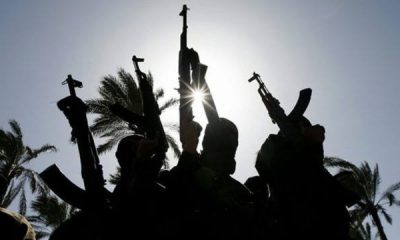
 News5 days ago
News5 days agoInsecurity: Bandits Unleash Terror In Kogi, Kano, Sokoto, Kwara
-
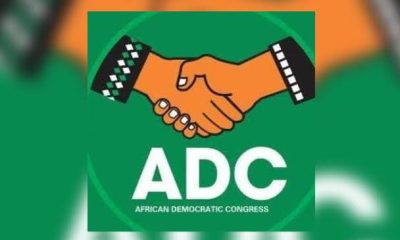
 News4 days ago
News4 days ago2026: We’re Yet To Pick Our Guber Candidate- Osun ADC
-
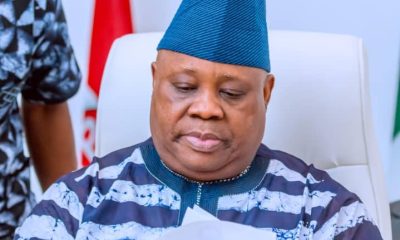
 News4 days ago
News4 days agoInternational Disability Day: Gov Adeleke Unveils Empowerment Programme For Persons With Disabilities
-
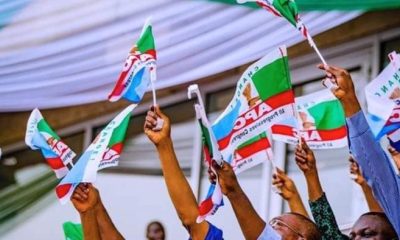
 Politics4 days ago
Politics4 days agoOsun 2026: Group Charges APC To Consider Aspirant With Unquestionable Character As Party’s Flagbearer


